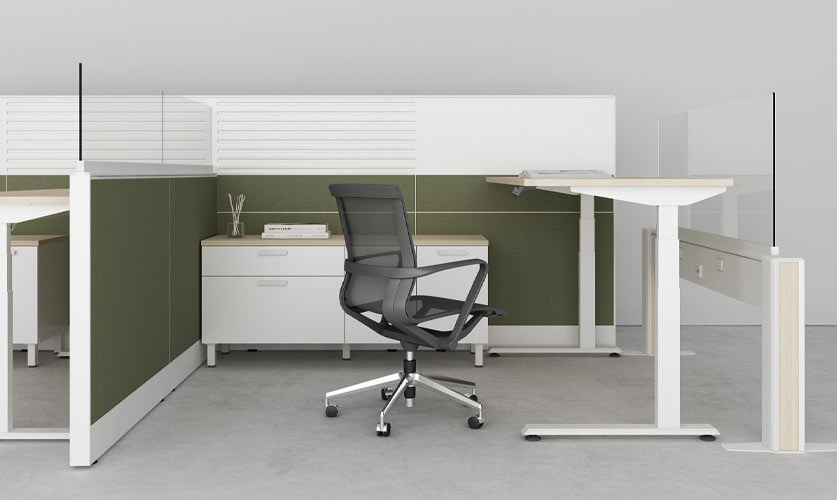

A long work day can leave you feeling tired and sore. From hunching over the keyboard to straining when you reach for your office supplies, a poorly designed work station is often at the root of the problem. Fortunately, some simple changes in your office furniture can have a positive impact on your body and overall wellbeing.
Let’s start with the office basics: desk and chair. Ergonomic office furniture allows you to maintain safe body positioning throughout the workday and helps to prevent strain. Buy office furniture that allows you to adjust your space to suit your personal needs. These two office furniture staples should be arranged so that your body is aligned: feet on the floor, back straight, and shoulders relaxed. Ideally you should adjust the height of your chair so that your feet rest flat on the floor and your knees maintain a ninety degree angle to the floor. If your chair is not adjustable, you can use a footrest for the same effect. Desk height is just as important. There should be plenty of space for your knees to fit comfortably underneath, and you should be able to reach your desk surface without significant raising or lowering of your elbows. Comfort is key when designing a work space, and ergonomic office furniture is the first step to a healthy work day.
Once your chair and desk are in place, you should position your computer. Especially in Salt Lake City, it is important to have your computer positioned well. Ergonomics plays a key role in the prevention of neck and shoulder strain while working at the computer. Your monitor should be adjusted to eye level and placed about an arms length away from you. The keyboard and mouse should be placed directly in front of the monitor where it can be reached comfortably, with straight wrists and minimal upper body movement. These simple adjustments can make a big difference by reducing strain on your muscles and joints.
Designing an ergonomic work station also requires thoughtful placement of commonly used items. The goal should be easy access to often-used items such as the telephone, writing utensils, and staplers. By keeping these items within arms reach, you can avoid unnecessary strain to your back and neck. Additionally, you can change some of your office habits to help boost the ergonomic quality of your work station. Adjust the sensitivity of your mouse and keyboard so they require less effort for a response and try to use speaker phone, especially if you plan to multitask while taking your phone calls.
Ergonomic office furniture and proper work station setup can save your body and keep you feeling good from the time you boot up your computer through the end of the work day. By adjusting your desk and chair height, properly arranging your computer and accessories, and strategically organizing your office supplies, your office space came become both comfortable and efficient. Now that you understand the basics of work station ergonomics, it is time to buy office furniture and set up your ideal, ergonomic work station.